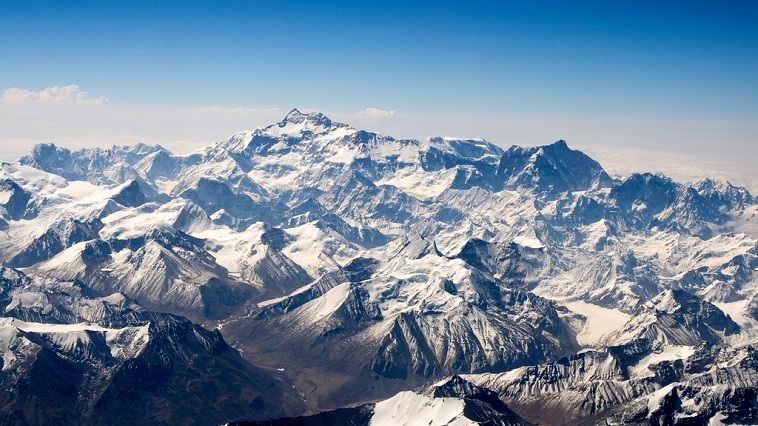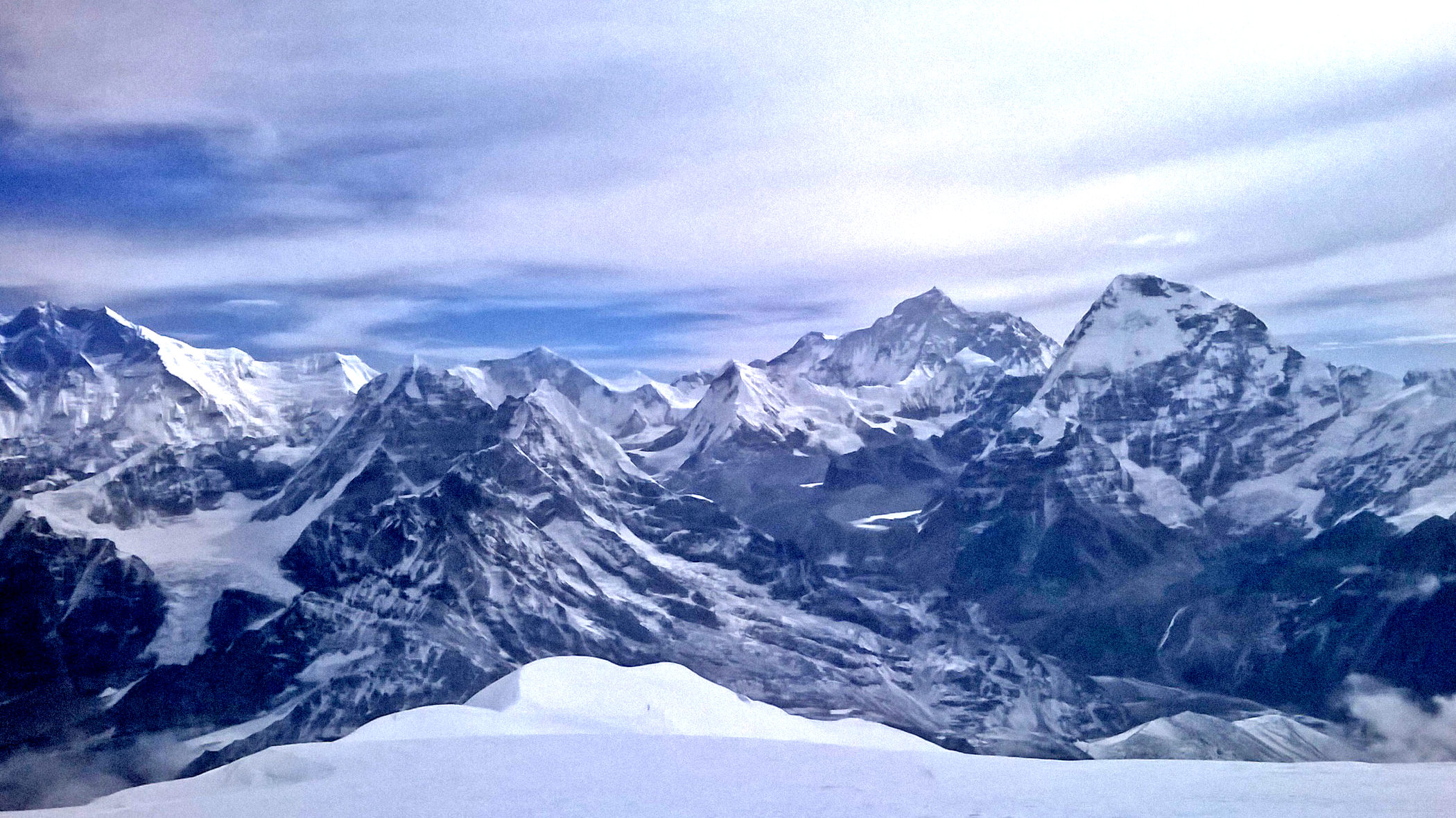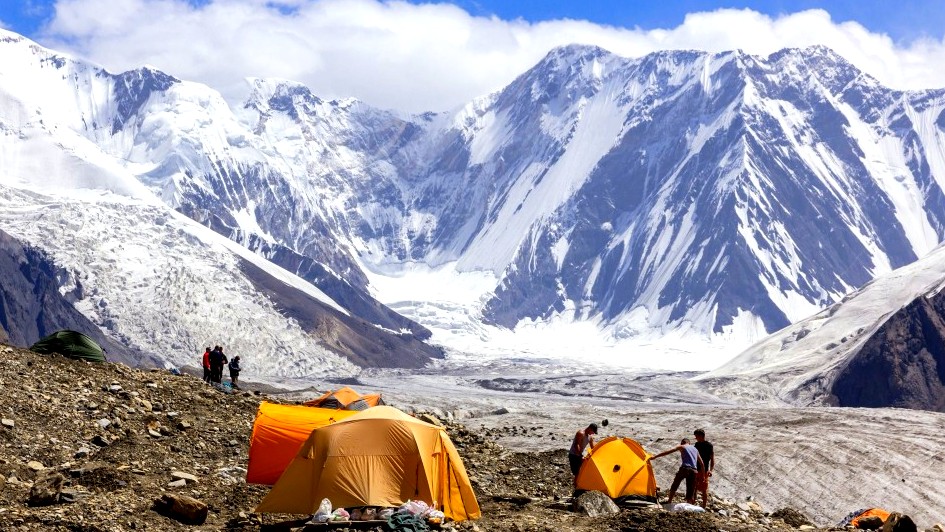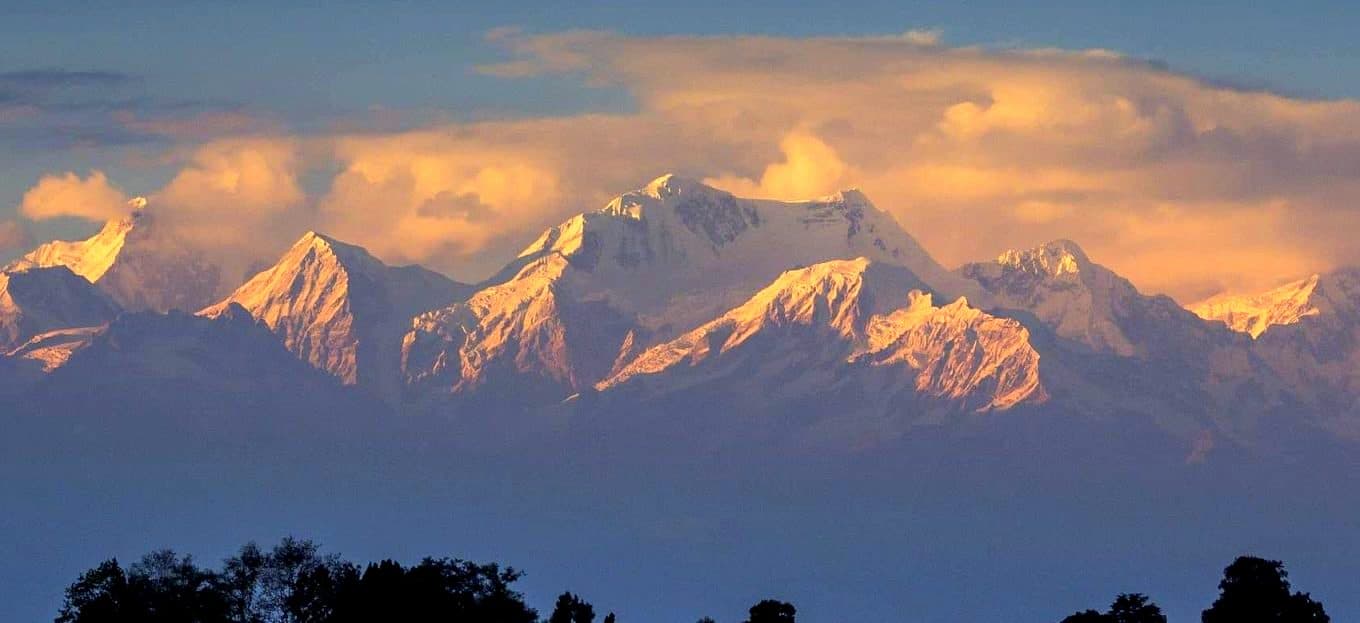Mount Kanchenjunga, the third-highest summit on Earth at an impressive altitude of 8,586 meters (28,169 feet), stands as a monumental challenge that beckons adventurers worldwide. Positioned on the border shared by Nepal and the Indian state of Sikkim, Kanchenjunga is a symbol of nature's grandeur and human determination. Its daunting ascent encompasses technical complexity, featuring treacherous rock walls, glaciated slopes, and icy expanses. Climbers are faced not only with physical hurdles but also with the unpredictable and unforgiving Himalayan weather, where sudden storms and avalanches can dramatically alter conditions. This journey demands not just mastery of mountaineering techniques, but also a deep respect for the mountain's power and the tenacity to overcome its trials.

The remote and secluded location of Kanchenjunga adds an additional layer of challenge to the expedition. The path to its base camp necessitates navigating through rugged terrain and enduring prolonged treks. Climbers must be self-sufficient, as modern amenities are replaced by the necessities of the journey. Kanchenjunga's isolation, far from urban comforts, underscores the raw connection between humanity and the wilderness. It's a realm that demands humility and reverence, where the mountain's magnificence commands respect, reminding climbers of their place within the natural order.
Yet, amidst these trials, Kanchenjunga offers a unique sense of accomplishment and connection. The multiple camps established at varying altitudes provide opportunities for acclimatization, allowing climbers to gradually adapt to the high altitudes and thin air. The reward for those who summit Kanchenjunga extends beyond personal achievement; it's an intimate interaction with a pristine and unyielding environment that humbles and empowers simultaneously. In the end, Kanchenjunga is not merely a mountain; it's an embodiment of nature's grandeur, an arena for the human spirit, and a canvas for stories of endurance, courage, and the indomitable will to explore.
Technical Challenges
The technical challenges posed by Kanchenjunga are a significant aspect of its difficulty. Climbers attempting to conquer this formidable peak must navigate through a diverse range of intricate terrains that demand a high level of mountaineering expertise. Here's a closer look at these technical challenges:
Steep Rock Walls
- Kanchenjunga features sections of steep, rocky terrain that require advanced rock climbing techniques. Climbers need to be skilled in using their hands and feet to find secure holds on the rock face. This involves efficient movement, balanced weight distribution, and precise coordination. As climbers ascend these walls, they must maintain awareness of their surroundings, constantly searching for the best route while ensuring their safety.
Heavily Glaciated Slopes
- The mountain's glaciated slopes are covered in thick layers of ice that demand proficiency in ice climbing. Climbers use specialized ice axes and crampons to penetrate the ice and gain purchase. Proper technique is essential to avoid fatigue and maintain stability. The climbing team must also be vigilant for signs of crevasses hidden beneath the snow, as they can pose serious hazards.
Challenging Ice and Snow Conditions
- Kanchenjunga's slopes experience varying snow and ice conditions due to changing temperatures and weather patterns. Climbers need to adapt their techniques to the type of surface they encounter. Soft, powdery snow requires a different approach than hard-packed ice. Adjusting footwork, tool placement, and movement tactics based on these conditions is crucial for efficient and safe progress.
Ice Climbing
- Ice climbing on Kanchenjunga involves scaling vertical ice walls and frozen sections. Climbers employ specialized ice tools to create secure placements in the ice. Proper technique, such as swinging the tools and kicking crampons into the ice, allows climbers to ascend with control. Ice climbing also demands an understanding of how to manage the dynamic forces applied to the tools and crampons during movement.
-
[block](74)
 Technical challenges during the Kanchenjunga Climbing
Technical challenges during the Kanchenjunga Climbing
Crevasse Navigation
- Glaciers on Kanchenjunga are marked by deep crevasses, which are hidden gaps in the ice that can be extremely hazardous. Climbers need to navigate these treacherous areas using ropework and crevasse rescue techniques. Crossing a crevasse safely requires setting up anchors and constructing snow bridges or ladders to span the gap. In the event of a fall, proper roped travel techniques are crucial to prevent team members from falling into the crevasse.
Rope Management
- Efficient rope management is vital for maintaining safety and coordination within the climbing team. Properly setting up anchor systems, ensuring secure belays, and managing rope slack are essential skills. Climbers need to communicate effectively and move together as a unit to ensure that everyone is protected in case of a fall or emergency.
Mixed Climbing
- Kanchenjunga's complex terrain often requires climbers to employ a combination of techniques, known as mixed climbing. This involves transitioning between rock, ice, and snow surfaces. Adapting quickly to the changing terrain and choosing the appropriate tools and techniques for each section of the climb is essential for making progress efficiently.
Mastering these technical challenges demands extensive training and experience in various mountaineering disciplines. Climbers aiming to conquer Kanchenjunga must be adaptable, resourceful, and capable of making split-second decisions while facing the dynamic and demanding conditions of the mountain.
Weather
Certainly, the weather challenges surrounding Kanchenjunga are a critical aspect of the climb. The high-altitude environment and the unique meteorological characteristics of the Himalayas contribute to the mountain's reputation for treacherous weather. Let's explore this aspect in more detail:
Harsh Conditions
- The region around Kanchenjunga is known for its harsh and extreme weather conditions, which can intensify as climbers ascend to higher altitudes. Low temperatures, strong winds, and rapidly changing weather patterns are common. The combination of cold temperatures and high winds can lead to significant wind chill, making it challenging to stay warm and comfortable.
Unpredictable Weather
- The weather in the Himalayas, including around Kanchenjunga, is notoriously unpredictable. Clear skies can suddenly give way to stormy conditions, and calm weather can abruptly shift to high winds and heavy snowfall. These rapid changes can catch climbers off guard, making it essential to be prepared for a wide range of scenarios.
Avalanche Risk
- Kanchenjunga's complex terrain, with its steep slopes and heavily glaciated areas, increases the risk of avalanches. Snow accumulation and changing temperatures can trigger avalanches that pose a significant threat to climbers. The unstable nature of snowpack in certain areas requires climbers to carefully assess avalanche risk and make informed decisions about route choices and timing.
Storms and Whiteouts
- Storms can descend upon Kanchenjunga with little warning, reducing visibility and creating whiteout conditions. Climbers can quickly become disoriented in such conditions, making navigation challenging and potentially dangerous. Whiteouts also increase the risk of accidents, as climbers may inadvertently stray off course or misjudge their surroundings.
Altitude Amplification
- The effects of high altitude amplify the impact of adverse weather conditions. As climbers ascend, the air becomes thinner, and oxygen levels decrease. This can lead to reduced physical and mental capacities, making it even more challenging to cope with harsh weather. Altitude sickness can also be exacerbated by extreme weather, further compromising climbers' well-being.
Limited Weather Windows
- The limited climbing season in the Himalayas means that climbers often face pressure to make the most of favorable weather windows. These windows provide a temporary break in the harsh conditions, allowing climbers to make summit attempts or progress to higher camps. Timing these attempts correctly is crucial to avoid getting caught in hazardous weather.
Communication Challenges
- Unreliable or limited communication infrastructure in remote areas around Kanchenjunga can hinder climbers' ability to receive accurate weather forecasts and updates. Climbers must rely on their own observations, experience, and the guidance of expedition leaders to assess weather conditions and make informed decisions.
Given these weather challenges, climbers must be well-equipped with appropriate clothing, gear, and supplies to withstand changing conditions. Flexibility, adaptability, and a thorough understanding of mountain meteorology are essential for managing the risks posed by the unpredictable weather patterns of Kanchenjunga. Climbers must prioritize safety and be prepared to adjust their plans based on the prevailing weather conditions.

Altitude
The altitude challenge on Kanchenjunga is a fundamental aspect of the climb. As climbers venture into the higher reaches of the mountain, they encounter a unique set of physiological and health challenges. Here's a more detailed exploration of this aspect:
Reduced Oxygen Levels
- At higher altitudes, the atmospheric pressure decreases, resulting in a lower concentration of oxygen molecules in the air. This means that with each breath, climbers take in fewer oxygen molecules, which can lead to hypoxia—a deficiency of oxygen in the body's tissues. Hypoxia impairs bodily functions and can cause symptoms like fatigue, shortness of breath, and impaired cognitive function.
Altitude Sickness (Acute Mountain Sickness - AMS)
- Altitude sickness, also known as acute mountain sickness (AMS), is a condition that occurs when individuals ascend to high altitudes too quickly without allowing their bodies enough time to acclimate to reduced oxygen levels. It is a common challenge for climbers and trekkers at elevations typically above 2,500 meters (8,200 feet) and becomes more pronounced as altitude increases.
Causes
- AMS is primarily caused by the body's inability to adjust rapidly to the decreased oxygen levels at higher altitudes. The thinner air leads to reduced oxygen saturation in the bloodstream, which affects the functioning of various bodily systems. Rapid ascents without proper acclimatization do not allow the body enough time to compensate for this change, leading to the symptoms of AMS.
Symptoms
Mild symptoms of AMS can resemble those of a hangover and often manifest within a few hours to a day after ascending to a higher elevation. These symptoms can include:
- Headaches: A persistent, throbbing headache is a common early sign of AMS.
- Dizziness: Feeling lightheaded or dizzy, especially with sudden movements.
- Nausea and Vomiting: A sensation of nausea and sometimes vomiting.
- Fatigue: Increased tiredness and weakness.
- Loss of Appetite: A decreased desire to eat.
- Insomnia: Difficulty falling asleep or staying asleep.
Progression
If climbers ignore or overlook the mild symptoms of AMS and continue to ascend to higher altitudes, the condition can worsen and progress to more severe forms. It's important to recognize the signs of AMS and take them seriously to prevent further complications. If AMS progresses untreated, it can lead to:
- High Altitude Pulmonary Edema (HAPE): This condition involves the accumulation of fluid in the lungs, leading to severe shortness of breath, coughing, and sometimes coughing up pink or frothy sputum.
- High Altitude Cerebral Edema (HACE): HACE is the most severe form of altitude sickness and involves swelling of the brain. Symptoms include confusion, disorientation, difficulty walking, severe headaches, and sometimes loss of consciousness.
Prevention and Management
The best approach to dealing with altitude sickness is prevention through proper acclimatization:
- Gradual Ascent: Ascend to higher altitudes gradually, allowing the body time to adjust to the reduced oxygen levels.
- Stay Hydrated: Drink plenty of fluids to maintain hydration.
- Rest and Acclimate: Take rest days at intermediate altitudes to allow the body to adapt.
- Avoid Alcohol and Certain Medications: Alcohol and certain medications can exacerbate altitude-related symptoms; avoid them while acclimatizing.
- Descend if Necessary: If symptoms of AMS worsen or progress, descend to a lower elevation to alleviate symptoms.
Altitude sickness is a serious condition that should not be taken lightly.
Climbers and expedition teams need to closely monitor each individual's condition and be prepared to respond to altitude-related symptoms promptly. Prioritizing proper acclimatization, recognizing the signs of altitude sickness, and following appropriate medical protocols are essential for a safe and successful ascent on Kanchenjunga.
Remote Location
Kanchenjunga is situated in a relatively isolated region of the Himalayas, straddling the border between Nepal and the Indian state of Sikkim. This isolation has both its allure and its challenges for climbers seeking to conquer its heights.
Access Challenges
- Long Treks: The journey to reach Kanchenjunga's base camp often involves long and arduous treks through rugged terrain. Climbers need to be physically fit to endure these treks, which can last for several days. The trails can be steep and demanding, with changing elevations that require careful acclimatization.
- Logistical Support: Due to its remote location, climbers must rely on extensive logistical support to transport equipment, supplies, and provisions to the base camp and higher altitudes. This requires careful planning and coordination to ensure that the necessary resources are available when needed.
- Limited Infrastructure: The lack of developed infrastructure in the area means that climbers need to be self-sufficient and bring essential equipment and supplies with them. This includes everything from food and tents to specialized climbing gear.
Cultural and Environmental Considerations
- Respect for Local Communities: The region around Kanchenjunga is often inhabited by local communities with distinct cultures and traditions. Climbers need to be respectful of these communities and their way of life, minimizing their impact on the environment and local culture.
- Permit Restrictions: The region's remoteness often leads to restrictions on the number of climbers and expeditions allowed each year. Obtaining permits can be competitive, and climbers need to adhere to regulations to protect the environment and manage the impact of mountaineering activities.
Self-Sufficiency and Preparedness
- Resource Management: Climbers must carefully manage their resources throughout the expedition. This includes rationing food, fuel, and other supplies to ensure they last for the duration of the climb.
- Emergency Preparedness: Being in a remote location means that access to medical facilities and rescue services can be limited. Climbers need to be well-prepared for medical emergencies and equipped with the necessary first-aid supplies and training.
Team Dynamics
- Cohesive Teamwork: The challenges posed by the remote location require strong teamwork among expedition members. Clear communication, effective decision-making, and mutual support are essential to navigating the logistical and environmental challenges.
- Expedition Leaders: Experienced expedition leaders play a crucial role in organizing and coordinating the logistical aspects of the climb. Their knowledge of the region and its challenges is instrumental in ensuring a safe and successful expedition.
Conquering Kanchenjunga requires not only physical and technical skills but also the ability to navigate the logistical complexities of reaching the mountain's remote location. Climbers and expedition teams need to be well-prepared, adaptable, and respectful of the environment and local communities as they embark on this challenging journey.
Permit Restrictions
Permit restrictions in the region around Kanchenjunga play a crucial role in preserving the environment, culture, and overall mountaineering experience. These restrictions are a testament to the commitment to responsible and sustainable tourism in such remote and sensitive areas. Let's explore this aspect in more detail:
Protecting the Environment
- Conservation of Ecosystems: The limited number of permits helps reduce the impact of human activity on the delicate ecosystems of the Kanchenjunga region. With fewer climbers, the area can better maintain its natural beauty and biodiversity, including its flora and fauna.
- Minimizing Waste: A controlled number of climbers means that waste and litter generated during expeditions can be better managed and disposed of responsibly. This helps prevent environmental degradation and contamination of the pristine environment.
Preserving Local Culture
- Respect for Local Communities: Restricting the number of climbers helps maintain a respectful balance between mountaineering activities and the local communities' way of life. It prevents overcrowding that could disrupt traditional practices and cultural norms.
- Cultural Impact: A limited number of climbers helps prevent overtourism, ensuring that the local culture is not overwhelmed by large numbers of visitors. This maintains the authenticity and uniqueness of the cultural experiences for both climbers and the local population.
Ensuring Safety
- Reduced Congestion: Permit restrictions help avoid overcrowding at base camps and along the climbing routes. This not only reduces the environmental impact but also enhances climbers' safety by preventing congestion in critical areas.
- Emergency Response: With a controlled number of climbers, the region's rescue and emergency response teams can better manage any incidents that may occur during expeditions. This helps ensure a more efficient and effective response to emergencies.
Competitive Permit Process
- Balancing Demand: The limited number of permits creates competition among mountaineers who aspire to climb Kanchenjunga. This selection process ensures that only those who are well-prepared, experienced, and committed to the climb can secure a permit.
- Quality of Climbers: The competitive nature of obtaining a permit helps ensure that climbers are adequately skilled and experienced. This promotes safety on the mountain and enhances the overall mountaineering experience.
Long Expedition Duration
The extended expedition duration required to climb Kanchenjunga is a notable aspect of the mountain's challenges. The complexity of the climbing route and the need to establish multiple camps at higher altitudes contribute to this extended timeframe. Let's delve deeper into this aspect:
Long Expedition Duration
- Complex Route: The route to the summit of Kanchenjunga is intricate and demanding. Climbers need to navigate through various terrains, including steep rock walls, glaciated slopes, and ice-covered sections. This complexity requires careful planning and progress at a cautious pace.
- Multiple Camps: Due to the mountain's height and the necessity of acclimatization, climbers need to establish multiple camps at progressively higher altitudes. These camps serve as resting points for acclimatization and allow climbers to adapt to the reduced oxygen levels before attempting the final push to the summit.
- Acclimatization: The establishment of multiple camps is essential for proper acclimatization. Climbers need time to gradually adapt to the thin air and reduced oxygen levels at higher altitudes. Spending extended periods at these camps helps prevent altitude-related health issues and improves the chances of summit success.
Climbing Camps
- Base Camp: Climbers start their expedition from the base camp, which serves as the initial point for organizing and preparing for the ascent. From here, climbers trek to higher camps and return to base camp for rest and acclimatization.
-
[block](74)

- Higher Camps: The climbing route typically includes several higher camps, each located at increasing altitudes. These camps provide essential shelter, rest, and acclimatization opportunities. Climbers gradually progress from one camp to the next, allowing their bodies to adapt to the reduced oxygen levels.
- Summit Push: The final phase of the expedition involves making the summit push from one of the higher camps. Climbers aim to reach the summit and return to a suitable camp within a single day. The summit day requires optimal weather conditions, strong physical and mental readiness, and careful pacing.
Factors Influencing Expedition Duration
- Weather: Unpredictable weather conditions in the Himalayas can delay progress and extend the expedition's duration. Climbers must wait for favorable weather windows for both acclimatization and summit attempts.
- Acclimatization: Spending extended periods at higher camps is necessary for proper acclimatization. This gradual approach ensures climbers' safety and well-being, even though it elongates the expedition.
- Team's Pace: The team's overall pace of progression depends on factors such as climbers' physical condition, altitude sickness symptoms, and the rate of acclimatization. Going too fast can lead to health risks, while proceeding too slowly may extend the expedition.
Climbing Kanchenjunga is not only physically demanding but also requires a patient and methodical approach due to its extended expedition duration. Climbers must carefully manage their resources, acclimate effectively, and make strategic decisions about when to advance to higher camps and attempt the summit. The longer timeframe contributes to the challenge and allure of conquering this mighty Himalayan peak.
Frequently asked questions (FAQs) about the difficulty level of climbing Kanchenjunga
Q. What makes climbing Kanchenjunga challenging?
A. Climbing Kanchenjunga is considered challenging due to its extreme altitude, technical terrain, unpredictable weather, remote location, and the need for extended expedition durations. The combination of these factors requires climbers to possess advanced mountaineering skills and a high level of physical and mental resilience.
Q. How does Kanchenjunga's altitude affect climbers?
A. The extreme altitude of Kanchenjunga leads to reduced oxygen levels, causing altitude sickness and potentially severe health issues. Climbers must undergo acclimatization to adapt to the thin air, and even then, they need to be cautious about the effects of altitude on their bodies.
Q. What technical skills are required to climb Kanchenjunga?
A. Climbers need to be proficient in various mountaineering techniques, including rock climbing, ice climbing, crevasse navigation, and rope management. The complex terrain, steep rock walls, heavily glaciated slopes, and challenging ice and snow conditions demand a diverse skill set.
Q. How does the unpredictable weather impact climbing Kanchenjunga?
A. The region around Kanchenjunga experiences harsh and rapidly changing weather conditions. Sudden storms, avalanches, and whiteouts can occur unexpectedly, posing risks to climbers. Flexibility, accurate weather forecasting, and the ability to adapt to changing conditions are essential.
Q. Why is acclimatization crucial for climbing Kanchenjunga?
A. Acclimatization allows climbers to adapt gradually to the reduced oxygen levels at higher altitudes, reducing the risk of altitude sickness. Setting up multiple camps at increasing altitudes helps the body adjust and minimizes health risks associated with rapid altitude gain.
Q. How does the remote location of Kanchenjunga impact climbers?
A. Kanchenjunga's remote location means access to the base camp and the mountain itself can be challenging. Long treks, limited infrastructure, and logistical support requirements make the climb more demanding. Climbers must be self-sufficient, respectful of local culture, and well-prepared for emergencies.
Q. Why does climbing Kanchenjunga require a longer expedition duration?
A. Climbing Kanchenjunga takes longer due to the complex route, the need to establish multiple camps at higher altitudes for acclimatization, and the unpredictable weather. Climbers must progress gradually, spending extended periods at various camps before attempting the summit.
Q. What are the permit restrictions for climbing Kanchenjunga?
A. The region around Kanchenjunga has limitations on the number of climbers and expeditions allowed each year. This is to protect the environment, and local culture, and ensure safety. Obtaining a permit can be competitive, but it helps maintain responsible and sustainable mountaineering practices.
Q. Is climbing Kanchenjunga suitable for all mountaineers?
A. Climbing Kanchenjunga is not recommended for novice mountaineers. It requires advanced skills, experience at high altitudes, and the ability to cope with challenging conditions. Climbers should have a strong background in mountaineering and high-altitude expeditions.
Q. What makes a successful ascent of Kanchenjunga rewarding?
A. Conquering Kanchenjunga is a remarkable achievement due to its difficulty and the diverse set of challenges it presents. Climbers who succeed have demonstrated exceptional skills, resilience, and determination. The breathtaking views and personal accomplishments make the journey worthwhile.
If you need any further information, please contact us by email: [email protected], Phone: +977- 985 100 5129 (WhatsApp)




